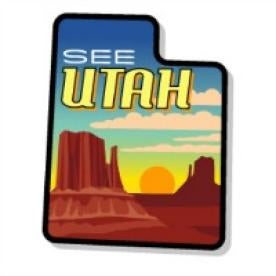In a win for property owners and project proponents, a Utah federal district court has ruled that the United States Constitution does not authorize the U.S. Fish and Wildlife Service (“FWS”) to regulate impacts to the Utah prairie dog as a listed “threatened” species living on private lands within a single state. The ruling departs from five federal appellate courts that have reached the opposite conclusion for other similarly situated species, and calls into question some of the key legal foundations of the Endangered Species Act (“ESA”) as applied to species with confined ranges. The court’s ruling also could curtail the Service’s ability to tailor protective rules and designate critical habitat for in-state populations of threatened species that exist in multiple states. The decision is available here (People for the Ethical Treatment of Property Owners [“PETPO”] v. U.S. Fish and Wildlife Service, No. 2:13-cv-00278-DB (D. Utah Nov. 5, 2014)).
The Court’s Opinion
The case arises from FWS’s designation of the Utah prairie dog as a “threatened” species and its subsequent issuance and modification of a special rule under Section 4(d) of the ESA that allowed take of the species on private land under certain narrow circumstances. Section 4(d) allows the Secretary of the Interior to “issue such regulations as he deems necessary and advisable to provide for the conservation of” threatened species. FWS often utilizes this authority to reduce the practical burden on competing land uses from a threatened (as opposed to “endangered”) listing and the correspondingly broad regulatory prohibition on “take” of that species.
Here, FWS had authorized five to six thousand takes per year on private lands within the Utah prairie dog’s range, until 2012 when FWS changed its 4(d) rule to impose a permit requirement and sharply limit the scope of the lands where future takes could be authorized. The regulatory changes restricted private property owners’ ability to develop their land for fear of unauthorized take of the Utah prairie dog and resulting FWS enforcement. This spurred a landowners group, PETPO, to file suit under the Administrative Procedure Act, alleging that the section 4(d) rule was unconstitutional.
The Court agreed with PETPO that neither the Commerce Clause nor the Necessary and Proper Clause authorizes Congress or, by delegation, FWS to regulate the Utah prairie dog because the species is located exclusively in Utah and does not substantially affect interstate commerce. The Court rejected as too attenuated the federal government’s arguments that the loss of tourism, scientific research, and publications caused by the potential extinction of the species would substantially affect interstate commerce. The Court also disagreed with Defendants’ contention that “the Necessary and Proper Clause authorizes special rule 4(d) because the rule is essential to the economic scheme created by the ESA.” Id. at 13. The court instead ruled that “there is no evidence that the diminution of the Utah prairie dog on private lands in Utah would significantly alter the supply or quality of animals for which a national market exists” and that “there is no evidence that the extinction of the Utah prairie dog would cause any other species to lose value or likewise become extinct.” Id. at 15.
Potential Implications
Because many listed species occur only in a single state, the Court’s reasoning, if upheld, could significantly curtail FWS’s authority. In particular, because the ESA does not prohibit takes of threatened species—protection of those species is grounded in a blanket 4(d) rule—the decision immediately casts doubt on FWS’s authority to list species as threatened when they live within a single state.
The opinion also raises other important questions regarding FWS’s ESA authority to regulate impacts on species and their habitat within a state. Some of these issues could be beneficial to landowners and developers. For example, the PETPO decision arguably could be extended to limit FWS’s ability to designate critical habitat for listed species within a single state or could call into question ESA listing decisions based on FWS’s new “significant portion of a species’ range” policy when the species population that triggers the listing occurs within a single state.
On the other hand, some of the unanswered questions could prove problematic to private stakeholders. For example, even where a listed species inhabits multiple states, PETPO maythreaten FWS’s ability to develop a 4(d) rule authorizing take of the species within a single state. With less flexibility to tailor 4(d) rules to specific locations, FWS could be forced to develop broader regulations covering the entire range of a species, a far more difficult undertaking, and may instead decide not to issue a 4(d) rule at all—an outcome that likely would prove costly to project proponents.
While it is undisputed that the PETPO decision is important, its full implications are not yet clear. The ruling almost certainly will be appealed to the Tenth Circuit. And it is not unreasonable to think that the decision ultimately could make its way to the U.S. Supreme Court given that it highlights an unresolved issue of constitutional law and statutory interpretation under the ESA, which has received divergent treatment among the federal appellate courts that have upheld FWS’s powers to regulate in-state species. That said, it is important to recognize that the decision is highly fact-specific—it only applies to a species residing on private land in a single state and rests on a constrained view of that species’ economic value. These factors make the PETPO decision worth watching going forward, and stakeholders in land use or project development should consider making their views heard asamici in any appeal.





 i
i